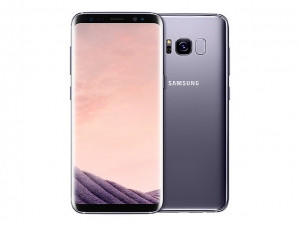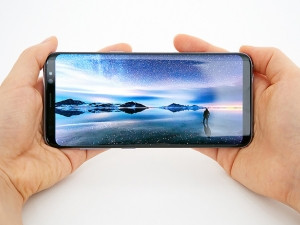
Samsung's latest flagship device features an edge-to-edge 'infinity' display, which the company says will completely change the way users interact with smartphones.
Samsung Electronics officially launched the Galaxy S8 smartphones at an event in New York today, and live-streamed to venues across the world.
"It has been a very challenging year," admits DJ Koh, Samsung's mobile chief. "But we are filled with valuable lessons and important new beginnings."
The company needs to repair its brand perception as a viable smartphone manufacturer after its flagship phablet device, the Galaxy Note 7, had to be recalled last year and eventually cancelled after a fault in battery design led to the smartphones catching fire.
The launch of the S8 was pushed out by a few months. Samsung's new handsets are normally launched in February every year at Mobile World Congress in Barcelona. This year, the company apparently wanted to fully resolve the battery issues that led to the Galaxy Note 7 fiasco.
Today it launched the 5.8-inch Galaxy S8 and 6.2-inch Galaxy S8 plus. The S8 keeps the curved 'Edge' display it introduced two years ago but has renamed it 'infinity display'.
The company says this design allowed it to fit more screen space into a smaller device, enabling it to still be held comfortably in the user's hand.

Both phones feature the infinity screen, and the company has done away with having a flat screen option, differentiating itself from competitors.
The new flagships also do not include a physical home button at the bottom of the screen; instead it has embedded it below the display. The button still responds to pressure as a physical button would.
The S8 allows users to unlock their phone either by using a fingerprint scanner at the back, a traditional password or pattern, or by using an iris scanner or facial recognition software.
The iris scanner was first introduced by Samsung with the Note 7 device, and the company says this is the most secure option. The facial recognition software allows users to simply look at the front of the phone to unlock it.
Last week, Samsung unveiled its own virtual personal assistant (VPA), Bixby, which will be included in the S8 and S8 Plus. Bixby is the firm's Siri and Google Assistant equivalent.
Samsung says its VPA understands context, allowing for interaction with the phone using voice and touch. For example, when in a maps app, touching a location and saying to the phone: "Bixby, send this to Cindy," will activate the VPA and send the address to Cindy in the user's phonebook. If there is more than one Cindy, the phone will ask the user which one.
Samsung says the more Bixby is used, the more it learns.
The phones also feature a 8MP F1.7 smart autofocus front camera, a 12MP F1.7 Dual Pixel rear camera, IP68 water- and dust-resistance, and always-on display.
Pre-orders will open globally tomorrow and be available to purchase from 5 May. The devices will cost R15 499 for the S8 and R17 499 for the S8+.
Specifications:
OS: Android 7.0
Dimension: 148.9 x 68.1 x 8.0 mm, 152g (S8); 159.5 x 73.4 x 8.1 mm, 173g (S8+)
Chipset: Octa core (2.3GHz Quad + 1.7GHz Quad), 64 bit, 10nm process
Memory: 4GB RAM, 64GB with microSD slot
Battery: 3000mAH (S8) 3500mAH (S8+)
Share